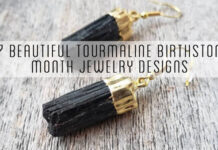Every jewelry maker must have the right tools to get the job done. A basic jewelry making toolkit normally consists of a pair of flat nose pliers, round nose pliers, flush or side cutters, and chain nose pliers. Almost all jewelry making techniques can be executed using any of these types of pliers. Knowing how to properly care and maintain your jewelry making pliers will ensure that they last you a very long time and keep in optimal shape for future projects. Adhere to these following tips to care for jewelry making pliers for years to come.
1. Using Pliers for the First Time
When you start off with a new set of pliers, it is best to prep them first before handing your wire or any metal. Use a fine sanding stick to soften the edges of the nose or tip of the pliers. Next, shine the surface of the pliers before they make contact to ensure no marks or grease is transferred to your wire.
2. Store in a Cool Dry Place
You want to protect your pliers from conditions of extreme heat. This can cause the metal to expand and incite structural problems that can damage them or expose you to dangerous operating conditions.

3. Get Comfortable Grips
Your pliers should fit comfortably in your hand. A person with larger hands may find it awkward to use short handled pliers. Make sure your tools have the right feel for the palm of your hand.
4. Think About Safety
Always cut at right angles. Do not try to rock your pliers side to side to bend write against the cutting tip. This may lead to you dulling or nicking the cutting edges. If your pliers are showing signs of dullness, sharpen the knives for greater leverage. Wear protective goggles for cutting wire. I have personally experienced one side of a flush cutter breaking off and flying towards my face.
5. Oil Their Joints
Lengthen the lifespan of your pliers by occasionally putting a drop of oil at the joint. This will keep them in easy operation for a long time.

6. Store Correctly
Pliers are not something you want to throw all on top of each other in a box. Keep your tools separated and stored upright. Many jewelry makers may have a special storage box intended to rest your pliers on top of or you can hang up a dowel rod that you store your pliers on with the noses facing upright. Some beginner plier sets can be purchased in storage cases with foam inserts that provide a designated space for each pair. This is a good idea for those operating in limited spaces or want their set ready for using on the go.
7. Operate Your Pliers The Right Way
Never situate your fingers between the grip and keep your wrist straight when using. Make sure the jaws and teeth keep clean. Greasy jaws are more likely to slip. Lastly, use your pliers for their intended function. Do not use lightweight pliers to perform a heavy duty job. This may cause them to become damaged or broken. Never exceed the length of the pliers handles.
8. Choose the Right Metal
Pliers can come in stainless steel or hardened tool steel. Stainless steel is rust resistant and a good option for bench work, however they will require maintenance on the nose as nicks appear from use. Stainless steel pliers also can not be forged. Hardened metal is the hardest, strongest, and most prefered for a long lasting life. These require less finishing and product cleaner work. However, moisture can lead to rusting in the long run. Keep these types of pliers lubricated with WD-40 or Cosmoline. Wipe them occasionally with a rust inhibitor.






